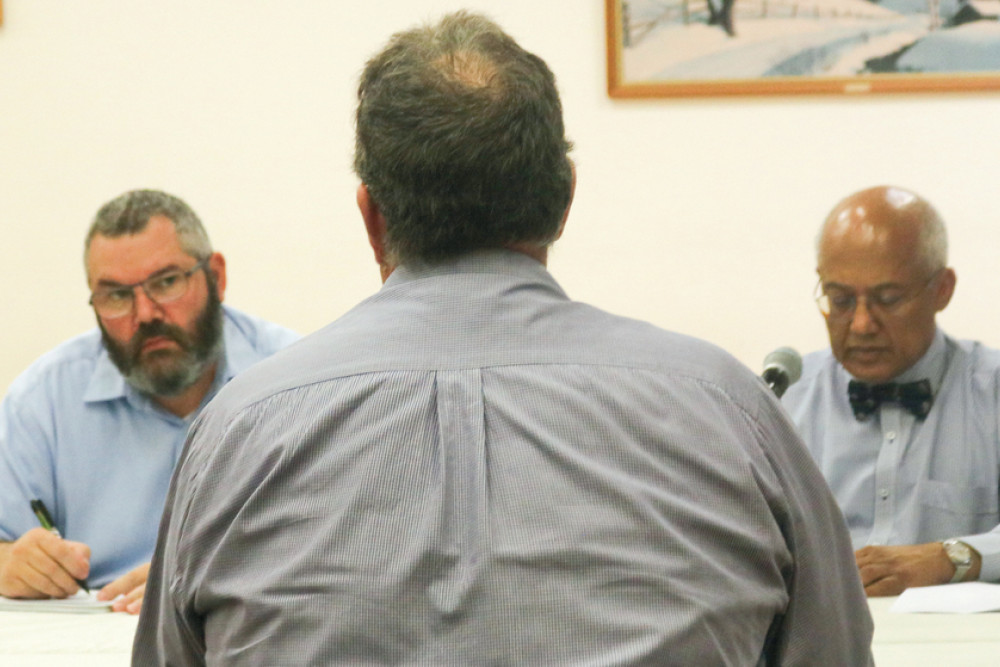22 November, 2023
PFAS in the spotlight
The Secretariat of an Independent Review into PFAS held a community consultation at the Oakey Community Centre last week into the potential uses of contaminated land near Swartz Barracks.

It follows a Federal election commitment by the Australian Labor Party to deliver an independent review of land uses around key Defence bases impacted by per-and poly-fluoroalkyl substances (PFAS) contamination.
The review is being led by Mr Jim Varghese, a former public servant, with experience leading independent reviews.
Mr Varghese is a director of several private and not-for-profit companies and is Chancellor of Torrens University.
The health impacts of PFAS on humans and livestock are not well known, however as a chemical with a long half-life, it stays in the body.
Dianne Priddle from Berwick Stud said the biggest impact on the property had been the inability to use groundwater.
“The biggest impact on our property was turning our irrigation water off in 2014, and selling that water later on,” she said.
“(We just want) like for like, out of PFAS without any more loss.”
“Our superannuation is the land.”
“(We have treatment of water at the base which) does not make a difference when we have millions of megalitres of underwater aquifers,” she said.
“For us, nothing much has changed at all.”
Dianne’s husband and co-owner of Berwick Stud, Dave Jefferis told the meeting it was encouraging to see the Government.
“This gives you a little bit of hope,” he said.
“We used to be proud of producing a good, clean product in this country.
“All of a sudden, we’re told by Government, don’t eat it, sell it on.
“I think we’ve been let down by people who’ve lost their soul fighting honest, hard-working people in this country.”
Most people are likely to have low levels of PFAS in their bodies, through exposure to everyday household items like carpet and upholstery protective sprays, cosmetics, sunscreens, and some non-stick cookware.
But people living near sites where PFAS has been released into the environment in large amounts may have higher levels in their bodies - particularly if they have been drinking contaminated bore water.
Affected resident Craig Commens, spoke about the uncertainty his family had faced, having lived on bore water until 2014.
“There was a handful of families in town doing the same thing,” he said.
“We found out then, (Defence) had identified the problem a year earlier.”
“They (Defence) found out in 2014 and they said, ‘We knocked on the door and left a message with one of your kids’.
“We kept drinking this (stuff) for another year.
“Talking about the land use, Defence can only control what’s on the base.
“Anything outside the Base, that’s got to be re-zoned by Council?”
He spoke briefly about the journey the town had gone through with national attention on this issue.
“We had all these self-serving lawyers and would-be journos come up,” he said.
“Half the stuff they’d printed was more at home in a MAD magazine.”
Mr Commens discussed the process for receiving compensation.
“The options we were told, take the offer or take the Government to Court,” he said.
“The worst thing about it was they had asked for figures all the way through with what this is worth at a certain point in time.”
“This is off a real estate agent who know their stuff.
“If PFAS didn’t exist, we had that figure, and we had the figure from Defence’s registered valuer.
“Anyone with half a brain could work out the property loss is the difference between those two figures.
“We got a third of that.
“I would love Defence to go and re-investigate it because I’m aware of people in smaller places in Zone 2 who got paid out more.”
“I’m aware of people who still haven’t been compensated from Round One.”
With regard to the potential use of his land, Dave Jefferis said there were several different potential uses for Berwick Stud.
“(You could) plant a hundred thousand hardwood trees, it could be carbon credits, you could put koalas in there, you could cement big areas and put (an) industrial (site) in there,” he said.
“But for us, it can’t be used for food production.
“That place is our superannuation. We’ve got to move.
“It’s not wasted. It can be used by other industries.
“It’s in good location, it’s got highway frontage, it’s beside a town, it’s beside a defence base.
“It could be used as a solar farm, battery farm, but it can’t be used for food production.
“We just want our lives back.”
Mr Varghese concluded the meeting by thanking the speakers for their contributions.
“As Dave Jefferis said, this was the implementation of an election commitment that the Albanese Government made,” he said.
“I’d like to thank our three presenters today,” he said.
“More importantly, I’d like to thank them for making themselves available in an authentic way.”
Alongside Oakey, the Review is also focussing on communities around RAAF Base Williamtown (NSW) and and RAAF Base Tindal (NT).
These are areas representative of the challenges faced by other Defence communities impacted by PFAS contamination.
Defence says it’s looking for as many people as possible to make submissions to the Review.
“There will be an opportunity for other communities affected by Defence’s historic use of PFAS to make submissions to the Review,” a spokesperson said in a statement.
“This includes identifying opportunities where adjacent land may be re-purposed to support the Australian Defence Force to deliver on the Defence Strategic Review, while better supporting communities.”
The Review is expected to be finalised in early 2024.
If you missed out having your say at the community consultation last week, two virtual consultation sessions will be taking place on Wednesday 29 November 2023
Session 1: 10 am – 1 pm
Session 2: 5:30 pm – 8 pm
Submissions to the review close on Sunday 3 December at 8pm AEST.


